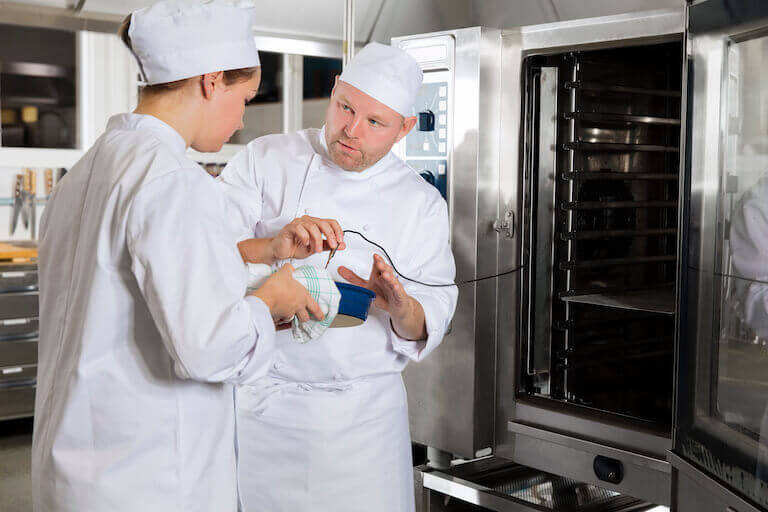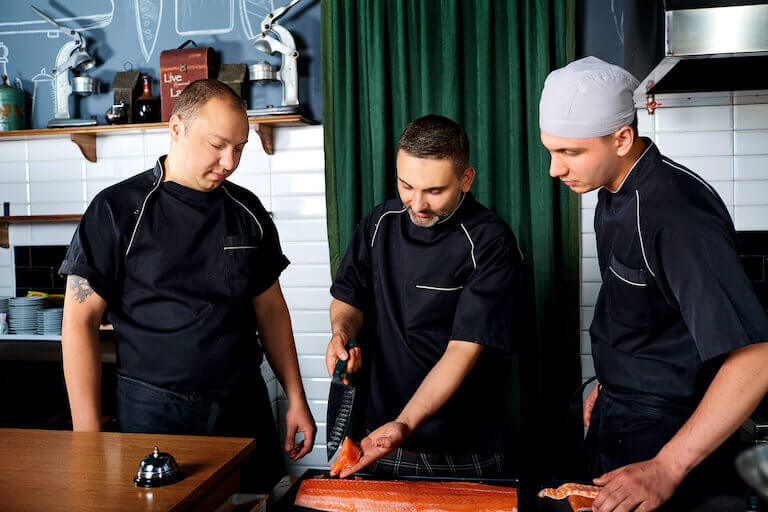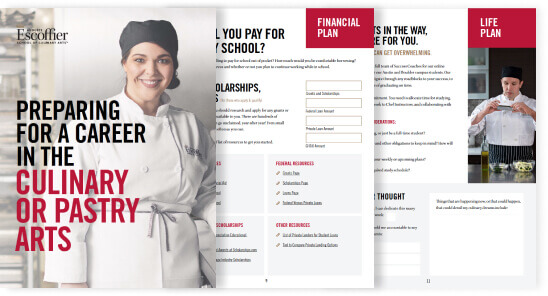If you’re a kitchen manager or a restaurant owner, you likely understand the seemingly never-ending cycle of hiring and training. It can feel like as soon as you get the kitchen fully staffed, someone else decides to move on. You’re always hiring. And with so much time and energy devoted to staffing, it can certainly feel like you have no time to work on long-term projects or let your creativity shine.
It has long been a complaint among industry employers that it’s hard to keep people—and the COVID-19 pandemic hasn’t made it any easier. While turnover rates in the leisure and hospitality sector usually hover between 70-80%, that number had spiked to 130.5% in 2020 due to the pandemic, according to the U.S. Bureau of Labor Statistics.1 Compare that to the average turnover rate across industries in the same year—just 57.3%!2
Although industry turnover may never match the nationwide average, there are steps that employers can take to make training easier and minimize their staffing losses.
Training Back of House Employees
The quest for retention begins the minute a new employee is hired. Poor training is often cited as one of the top reasons for employee turnover, with staff feeling like fish out of water in their day-to-day tasks. Standardized training processes for new staff can start these team members off on the right foot, knowing the dos and don’ts of restaurant operations according to best practices and company guidelines. Here’s how you can make sure your own workforce is properly trained.
Create Standardized Training Processes for BOH Employees
If you’ve worked in the hospitality industry for long, chances are you’ve encountered a training “program” that looks like this:
- You arrive for your first day.
- You’re introduced to George. He’s a line cook. He’ll be your trainer.
- You shadow George for the day. He shows you the walk-in, dry storage, where the dumpsters are. During service, he turns back to you from time to time and explains what he’s doing as he does it.
- Occasionally, he says things like, “This is how we’re supposed to do this, but this is how I do it.”
- You repeat the process for three to four days, and voila! Training is complete.
This kind of haphazard training process can lead to gaps in knowledge and inconsistencies in the kitchen. It’s not that George doesn’t want to be a good trainer. He just doesn’t know how to train restaurant employees, because he doesn’t have clear guidelines to follow.
What if, instead, George had a checklist of everything he was expected to go over with the trainee on each day of their training? From equipment safety procedures to sanitation standards to recipes, a written training plan, along with standard operating protocols and how-tos, will make new employees feel firmly grounded in the kitchen’s operations.

Attract and Retain with the Auguste Escoffier Global Solutions Work & Learn Program
While each restaurant or food service operation should have its own written procedures, there are some skills that are better taught in a classroom by professional Chef Instructors.
With the Work & Learn program from Auguste Escoffier Global Solutions, employees can attend culinary school online while working in your restaurant kitchen. When employers partner with Work & Learn, an employee who enrolls at Escoffier’s online program can secure a $2,000 scholarship. The program asks employers to match that scholarship with an additional $2,000 contribution, but this is not a requirement.
Employees can learn new skills and bring them into the workplace the very next day. By educating your workforce in culinary arts, baking and pastry, or plant-based culinary arts, you invest in their future and you may gain employees who are more efficient, more knowledgeable, and more dedicated to their careers and to your restaurant.
Chef Tim from Angry Cactus explains how Work & Learn has led to an improved quality of work.*
Customized Training Programs from Auguste Escoffier Global Solutions
Educating cooks and hospitality professionals is its own special skill, outside of standard cooking and food knowledge. While chefs are excellent at their craft, they’re not necessarily experienced educators. And this can lead to difficulty in creating employee training programs.
This is where Escoffier Global’s customized training programs can come in. These programs can be tailored specifically to your company to teach basic procedural competencies like food safety and storage, or advanced culinary skills like making perfect fresh pasta or laminated pastries.
Why Does the Hospitality Industry Have Such High Turnover?
A number of factors influence the especially high turnover rate in hospitality. To start, restaurants often employ a large number of students, younger workers, and seasonal staff who are looking for a short-term job, not necessarily a career.
As for the career cooks and chefs, they sometimes find that upward mobility as a culinary professional is more easily achieved by moving from one kitchen to another, rather than staying in one place.
While the younger workforce and seasonal staff may not be “fixable,” you can encourage more skilled employees to stay by making your kitchen a more attractive place to build a career.

Tips for Retaining Back of House Employees
Each time you have to make a new hire, you also have to:
- Post a job opening
- Collect and review resumes
- Conduct interviews
- Make a hire
- Schedule training
- Do administrative paperwork for the new hire
- …and more
It takes hours upon hours to get all this done, and it can cost thousands of dollars in resources and lost productivity. Multiply that by 5 or even 10 lost employees per year, and you start to see the true cost of turnover.
A vibrant, engaged BOH workforce may be more likely to stay long-term, stabilizing your kitchen operations and saving you money and time in the long run. Here are some options to consider that may help with employee retention:
- Raises and/or bonuses – Employees who feel fairly compensated are more likely to stay. If there’s any room in the labor budget, a dollar raise can go a long way.
- Benefits like sick leave and health insurance – Healthcare is incredibly attractive to BOH employees, since so few restaurants and hospitality businesses offer it.
- Continuing education – An investment in your staff through programs like Auguste Escoffier Global Solutions’ Work & Learn can make them more likely to stay.
- Giving back to the community – People like to work for companies that they can be proud of. Charitable giving initiatives or volunteer opportunities can help employees feel that their work has purpose.
- Opportunities for growth and promotion – Do you give current employees first chance at promotions, or do you tend to look outside of the company? If employees don’t see any growth opportunities, they could be more likely to look elsewhere for their next step on the ladder.
- Positive feedback and encouragement to improve – Everyone needs to hear when they’ve done a good job. If the team really pulled together on a hard shift, give them the accolades they deserve. And on the other hand, if someone is struggling, you might show that you’re interested in their improvement with a private sit-down where you can offer helpful suggestions.
“This Work & Learn program has just been a really great thing for Angry Cactus. We’re really excited to continue the educational aspect of the Work & Learn concept. I really think it’s amazing to be part of the program and I look forward to continuing.”
Tim Condon, Executive Chef, Angry Cactus & Work & Learn Program Partner*

Better Training is a Smart Business Decision
Training and retention in the back of house is critical to a kitchen that runs smoothly. Chefs, kitchen managers, and restaurant owners all have some financial interest in making their kitchens attractive to career-driven cooks and chefs. Not only does it make good business sense, but it’s the right thing to do.
To partner with Escoffier’s Work & Learn program, or to start a customized training plan, contact Auguste Escoffier Global Solutions today!
To learn more about hiring and managing employees, try these articles next:
- How to Identify Candidates Who Want a Career (Not Just a Job)
- Why Businesses Should Partner With Culinary Schools for Externships
- How Many Employees Does it Take to Run a Restaurant?
This article was originally published on October 8, 2019, and has since been updated.
*Information may not reflect every student’s experience. Results and outcomes may be based on several factors, such as geographical region or previous experience.
1https://www.bls.gov/news.release/jolts.t16.htm
2https://www.bls.gov/news.release/pdf/jolts.pdf



